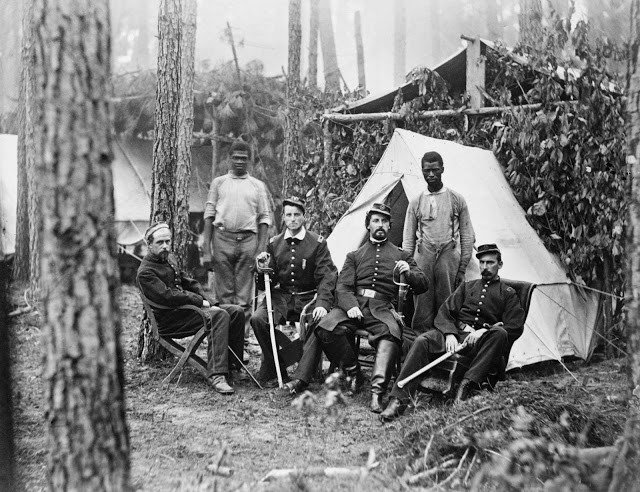The ABCs of the American Civil War
September 5, 2016

September's Coffee with the Curator at the Museum of World Treasures will expand upon engineering during the Civil War. Leading up to that event, we will cover some of the basics of the Civil War.
The American Civil War continues to be one of the United States' most fascinating periods of history. The war was fought from 1861 to 1865 which, though relatively short in comparison to other war periods, is rife with historical significance. The origins of the Civil War stemmed from the issues of slavery and what degree of autonomy states had from the federal government. Intense combat over four years left an estimated 750,000 soldiers dead and destroyed the South's infrastructure.

Many large wars have their own vocabulary or glossary that develops, and the Civil War is no different. Read on to learn some of the terms frequently used throughout Civil War history texts.
- Abolitionist: person(s) who wish to get rid of, or abolish, slavery
- Antebellum: a term to describe the U.S. before the outbreak of the Civil War
- Bayonet: a metal blade (often a long knife or short sword) that could attach to the end of a musket or rifle-musket to serve as a spear in hand-to-hand combat
- Bivouac: temporary, makeshift encampment for soldiers that could be constructed quickly with materials nearby
- Blockade: the North's efforts to keep ships from entering or leaving Southern ports
- Cavalry: a military branch mounted on horseback; these units could move quickly and were used to gather information about enemy movements
- Emancipation: freedom from slavery
- Hardtack: a term used to describe the hard crackers issued to soldiers; these simple crackers were made of flour, water, and salt, and became rock hard when stale
- Infantry: military branch that traveled and fought on foot
- Kepi: a cap worn by Civil War soldiers, mostly among Union soldiers
- Mason-Dixon line: a boundary in the 1760s that ran between Pennsylvania to the North and Delaware, Maryland and (West) Virginia to the South; it became a symbolic division between free states and slave states
- "Peculiar Institution": a term for slavery in the South
- "Quaker Guns": large logs painted to look like cannons in hopes of fooling the enemy into thinking an area was stronger than it was
- Rebel: those loyal to the Confederate states
- Slavery: a state of bondage where people, mostly African Americans (and some Native Americans), were owned by others; slave owners were typically white and forced their slaves to work for them
- Union: also referred to as the North or the United States; this portion of the country remained loyal to the Federal government during the Civil War
- Yankee: a Northerner; someone loyal to the Federal government
Join us September 15, from 9 - 10 a.m., for Coffee with the Curator. Enjoy coffee from The Spice Merchant, pastries, and new friendships. While you are there, be sure to check out our Civil War Exhibit.
Source: Civilwar.org
